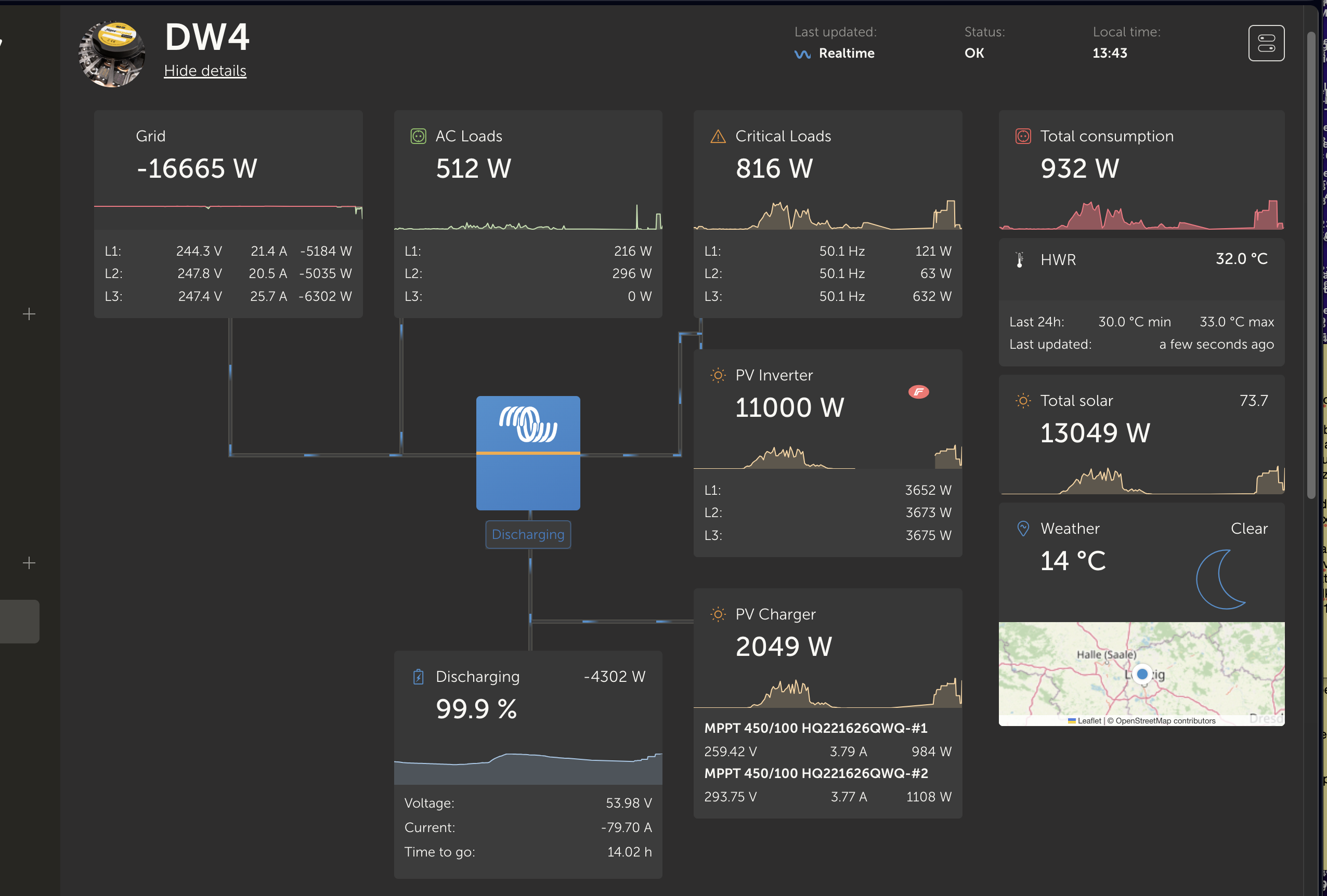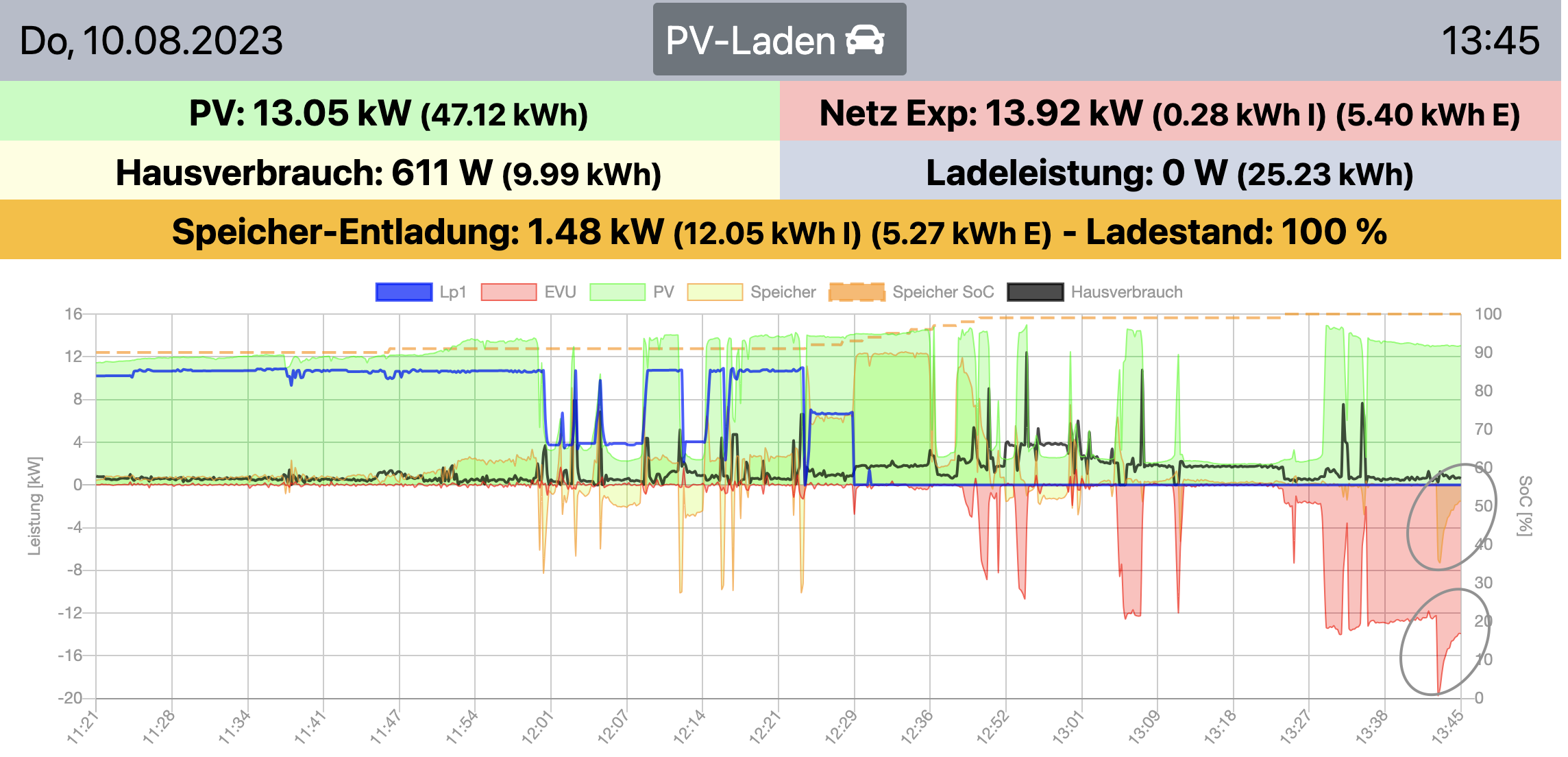Hi all,
we have a 3ph setup involving the aforementioned Multiplus, 3x Fronius Symo on ACout and a RS450/100 on the DC side.
I notice a pretty large DC_feedin after switching from Absorption to Float, which I cannot explain. AC and DC feed-in is allowed, all PV data is reaching the Cerbo, ESS is active and working. I don't see any reason for feed-in beyond the DC-coupled DC power - what am I missing here?

The effect lasts for roughly 2mins and the current is ramping down over time, as if something is being actively ramped down or some sort of equalisation is going on. You can see in the end of this screenshot:

I have now configured the float voltage 0.5V higher to see if it makes any difference tomorrow, but either way, I don't see a reason for such large feed-in beyond PV power?
Any explanation is appreciated :)
Tnx,
Martin

